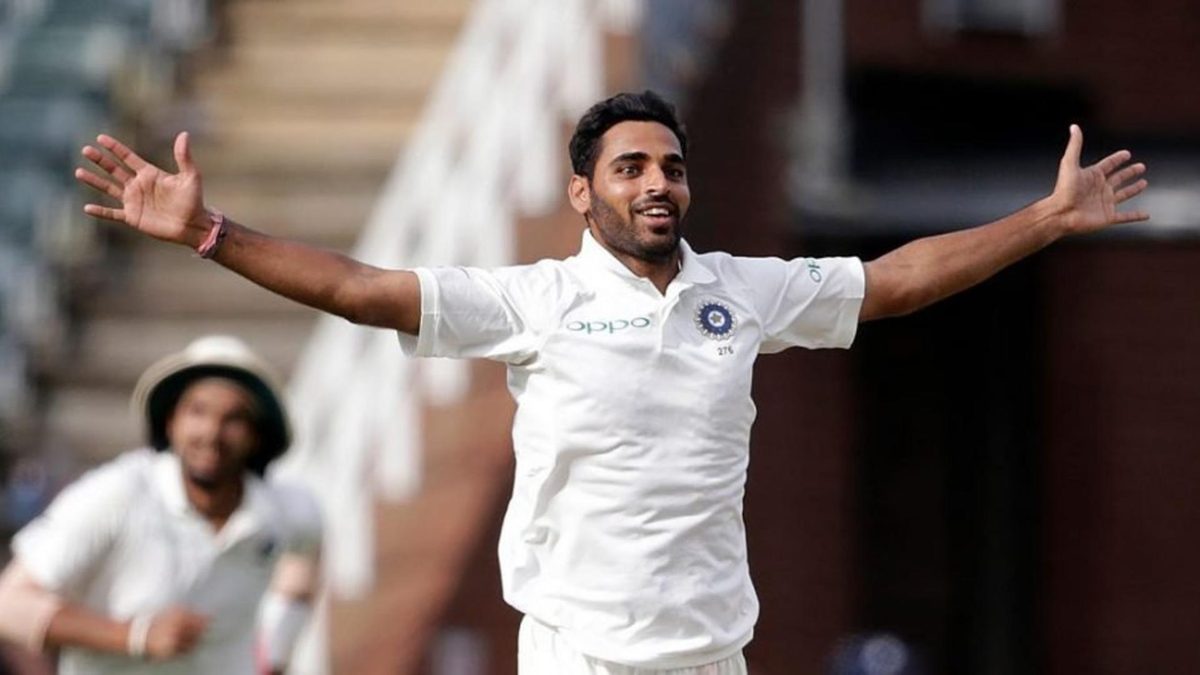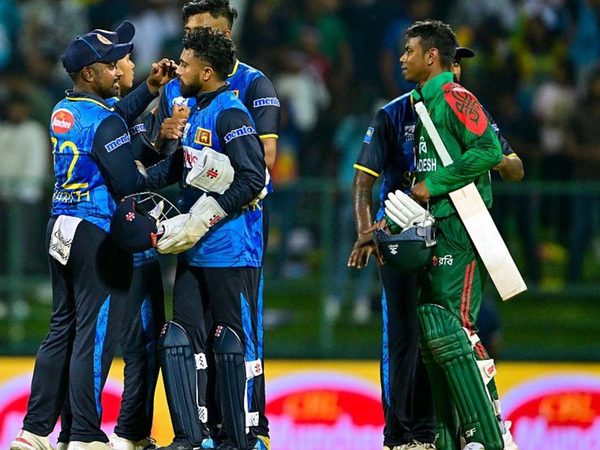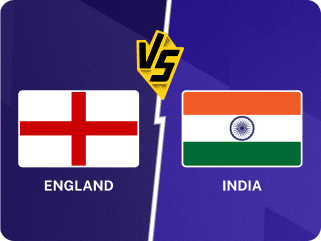
Recalling the sweet but short Test career of Bhuvneshwar Kumar, one of India’s finest swing bowlers.
In May 2016, Bhuvneshwar Kumar made clear that his dream was “to play Test cricket again”, and that he was “determined to chart a new course and prove a point”. Until then, he had played 12 Tests in three years. Since then, he added just nine more.
The sweet but short journey of Bhuvneshwar’s Test career has been of equal parts, scintillating and tragic. His international debut came in the same year Praveen Kumar – whom Bhuvneshwar once called his mentor – played his last game for India. In many ways, he was a like-for-like replacement for Praveen: both are out-and-out swing bowler who can cut the ball both ways, often to dramatic results when the leather is new. Among all Indian seamers with 50 Test wickets, only Jasprit Bumrah has a better average than Bhuvneshwar.
In an ideal world, Test cricket should have been the Kumars’ happiest hunting ground. But Praveen whittled away early, and Bhuvneshwar could not carry on after an excellent start.
He did not make as immediate an impression as he did in ODIs, where his in-dipping brilliance to dismiss Mohammad Hafeez with the first ball of his career remains a vivid memory among Indian fans. He went wicketless in two of his first seven innings, and managed just nine wickets from his first six Test matches. It was not until his first Test abroad that his true worth surfaced: in back-to-back innings, he bagged 11 wickets, including an entry into the Lord’s Honours Board, helping India script one of their most famous wins away from home.
Bhuvneshwar turned into an overnight hero, becoming the first Indian seamer in 78 years to take a six-for at Lord’s. The immaculate seam presentation, the impeccable length, and the enchanting late movement made for quite a package.
For a country where fast-bowling champions used to be in short supply until that point, a maiden overseas debut as sensational as his was not going to be forgotten soon. Few would have thought that he would take 30 per cent of all his Test wickets in that series alone.
An ankle injury in 2014 turned into a setback the following year, forcing him out after just five overs in the 2015 World Cup. By 2016, he was back into the fold. The time away did little to subdue his wicket-taking brilliance. A five-wicket haul in the West Indies, followed by a maiden five-for at home, only affirmed that he was ready to take his game to the next level and emerge as India’s frontline quick.
By this time, he had already become a raging white-ball force. There was also more pace to go with the swing, bolstering his arsenal. At home, India preferred the combination of Mohammed Shami and Umesh Yadav, but Bhuvneshwar was no less in the limited chances that came his way. Twin four-fors against Sri Lanka in Kolkata made it clear that he was an integral part of India’s all-format attack.
The peak seemingly came in 2018, when Bhuvneshwar was in exceptional touch in South Africa. It began with a famous four-wicket haul in Cape Town, and continued through Johannesburg, where he bowled a top-draw inswinger to clean up AB de Villiers. He ended with a Player of the Match award in the Bullring. And yet, it turned out to be the last time he turned up in whites — not only for India but also in First-class cricket.
Later that year, another Test trip to England ended before it could begin, with a different injury returning to haunt him. A lower-back condition put an end to his preparation, starting a long period of rehabilitation. It was not just about those five Tests; one injury suddenly pushed him back in the pecking order. Jasprit Bumrah’s incredible ascent reshaped the Indian attack, and the emergence of a younger brigade of quicks, coupled with the reemergence of Ishant Sharma and Mohammed Shami, put Bhuvneshwar out of the radar.
It has been four years since Bhuvneshwar last played a Test match, at 28. India’s pace attack has only grown from strength to strength in his absence, metamorphosing into arguably India’s finest attacks of all time. He is still around, as a vital force with the new white ball. But the Test column continues to remains at 21 matches. One can only imagine what it could have been.
As India’s attack moves into its next phase, building on its resounding success, it is worth looking behind at those who were small yet impactful cogs of the transition. Bhuvneshwar could have become so much more, for there have been few to match his skill with a new ball. The constant run-ins with injuries – tweaked hip, bad ankle, stiff hamstring, you name it, he had it – have kept him away from bowling long spells. He may not resume playing cricket in the whites, but there is still plenty to celebrate about him, even if only in shorter packages.
Indian cricket has moved on: unfortunate as it is, so should we.







